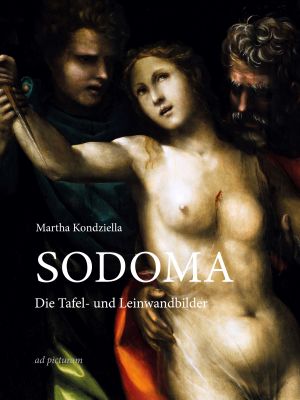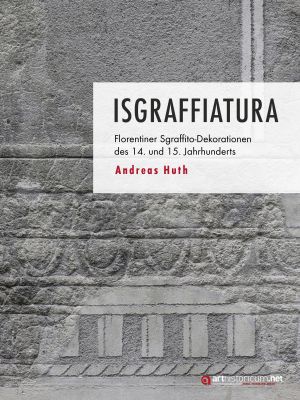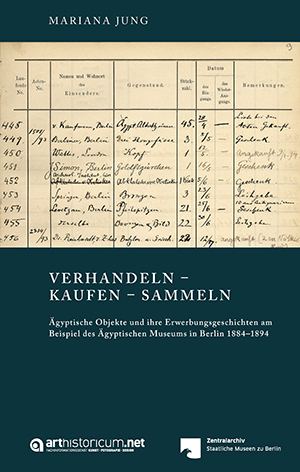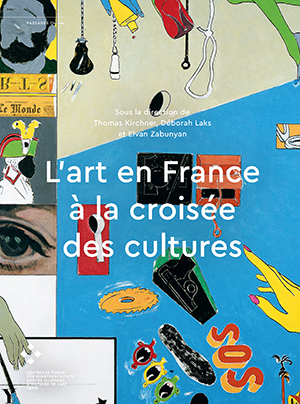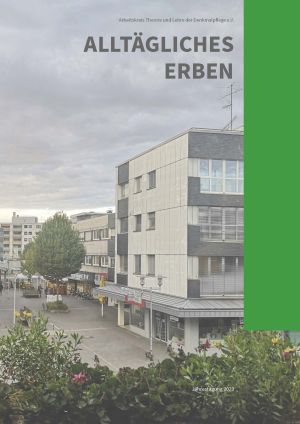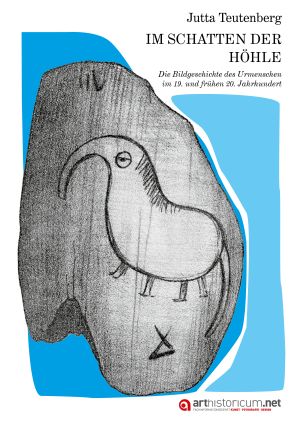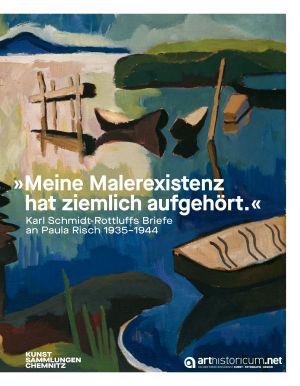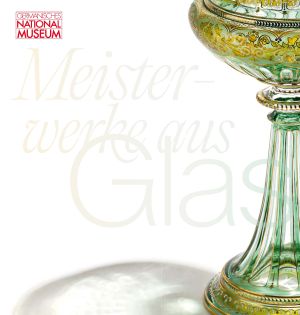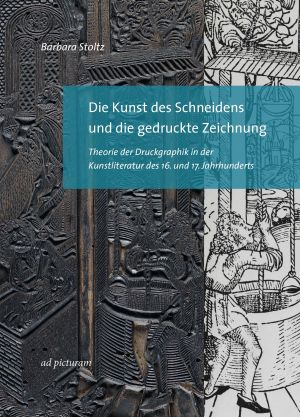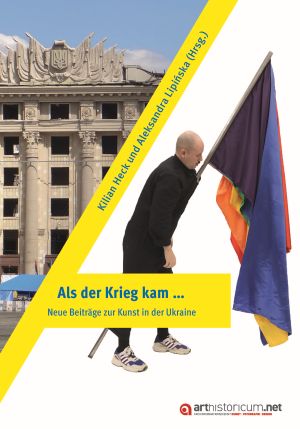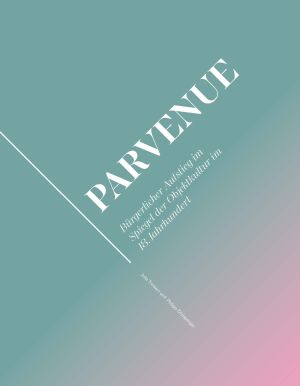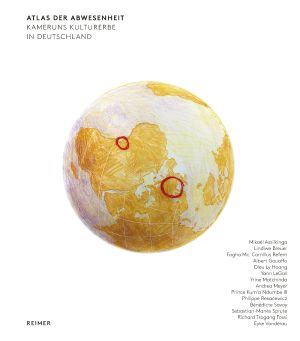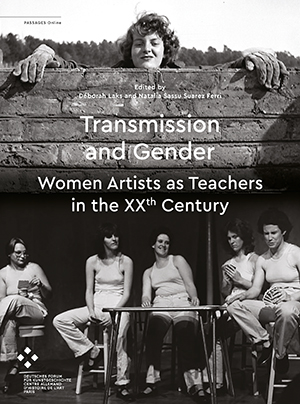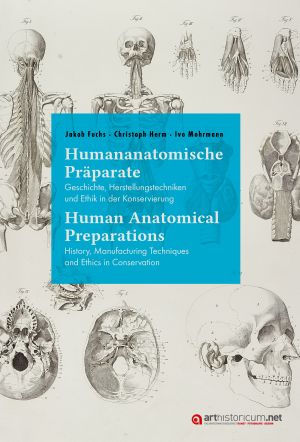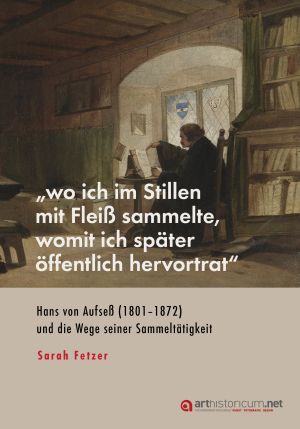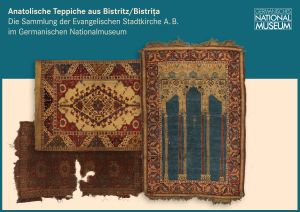Books
Sodoma: Die Tafel- und Leinwandbilder
Despite his influence on Siena's art scene, Sodoma is one of the most neglected Renaissance painters. Research on him mainly focused on his frescoes. This study is an in-depth analysis of his panel and canvas paintings considering his artistic development, handling of influences and working methods. In additon, it provides answers to questions about the genesis of specific art works and a comprehensive catalog raisonné of Sodoma's panel and canvas paintings with accompanying drawings. This publication thus paves the way for further studies on Sodoma and brings him back into the art historical discourse.
Anhänger in Buchform: Eine Geschichte des europäischen Schmucks (1450—1650)
With the spread of book printing in Europe from the mid-15th century, precious miniature artifacts emerged, designed in the form of books. They were only a few centimeters in size and featured book spines, page edges, and closures. However, they were typically not reductions of 'real books.' Instead of printed or written parchment pages, these pendants often contained illustrated metal sheets inside or served as containers for relics.
These representative jewelry pieces served their wearers as status symbols, expressed their humanistic beliefs and erudition, but could also make a religious statement. At the same time, they often served as a means of individual devotion and reaffirmation of faith or promised protection as powerful amulets.
In her study, Romina Ebenhöch presents a catalog of this unique genre of jewelry pendants for the first time and analyzes the function of these objects.
Isgraffiatura: Florentiner Sgraffito-Dekorationen des 14. und 15. Jahrhunderts
In the 14th and 15th centuries, the outer walls of numerous palaces, churches and public buildings in Florence were decorated in sgraffito, a design based on the scratching of motifs into the plaster surface. Among the most prominent examples are the courtyards of the Medici Palace and the Palazzo della Signoria. The study examines the history of the technology and the practical execution, considers the status as an (architectural) image and gives an overview of the use of sgraffito in other Italian cities. The detailed catalogue includes 34 Florentine buildings with sgraffito decorations executed in the Tre- and Quattrocento.
Disegni di Prospettiva Ideale (1732): Un omaggio di Filippo Juvarra ad Augusto il Forte e i rapporti fra le corti di Roma, Torino, Dresda
In the spring of 1732 Filippo Juvarra sent from Rome an album with 41 Disegni di Prospettiva Ideale meant for August the Strong, prince-elector of Saxony and king of Poland. Bearer of the gift was Antonio Giuseppe Gabaleone Count of Wackerbarth Salmour – the Turin nobleman naturalized in Saxony – who at that time was in the papal city on a secret mission on the king’s behalf.
The album preserved in the Kupferstich-Kabinett of Dresden celebrates the exemplarity of Rome over the centuries. Through its themes, its staged compositions, and its graphic technique, an evocative narration unfolds – a further confirmation of Juvarra's multifaceted qualities as a great director of the arts.
The drawings are here analyzed as a whole for the first time, together with some unpublished letters that help shed light on an artistic exchange involving the courts of Rome, Turin and Dresden.
Verhandeln – Kaufen – Sammeln: Ägyptische Objekte und ihre Erwerbungsgeschichten am Beispiel des Ägyptischen Museums in Berlin 1884–1894
Provenance has been in the focus of international museum research and politics for more than a decade. This book analyses acquisition histories of objects in the Berlin Egyptian Museum during the first years of the director Adolf Erman (1854—1937). Therefore, two original documents of the Central Archive of the Staatliche Museen zu Berlin have been analysed and published. This allows the identification of individual provenances as well as their acquisition context. The recording of the various art and antiquities markets, the protagonists, museums and their acquisition strategies illustrate the antiquities trade in the 19th century in Egypt and Europe.
Privater Kunstbesitz und öffentliche Interessen: Die Berliner Leihausstellungen alter Kunst im Deutschen Kaiserreich
From the 19th century, loan exhibitions flourished all over Europe. Local collectors in the bigger cities collaborated in order to present their private art treasures to the public. This exhibition format is a predecessor of today’s museum practise and it contributed to the development of new curatorial strategies. This study examines ten Berlin loan exhibitions between 1872 and 1914, that have been curated by museum makers like Wilhelm von Bode, Max J. Friedländer and Ludwig Justi. It focusses on the potential social implications for the lenders as well as the cultural-political intentions of the organisers of these art shows.
Mehr als ein Staubjäckchen: Zu Buchumschlägen kunstwissenschaftlicher Literatur (1910–2018)
Nowhere is the ›stripped‹ book as visible as in the library, where the bared spines of books line up in metres upon metres of shelves. The loss of the dust jacket is therefore as salient as it is familiar. Reason enough to trace the supposedly inconspicuous ›life‹ of the dust jacket. But what exactly is ›a dust jacket‹? What makes it special? And how does it relate to the text within? The author draws our attention to selected writings on art and cultural history, whose outsides and insides interact with one another in unsuspecting ways. We will come to see that dust jackets are manifests of the ideas and aesthetics expressed in the covered books.
„Kipper- und Wipperzeit“ 1619-1623: Die größte Inflation in der Geschichte des Heiligen Römischen Reichs deutscher Nation
2023 marks the 400th anniversary of the end of the "kipper-and-wipper-period", an era of dramatic monetary devaluation. Three centuries before the German Hyperinflation, massive coin debasement and the destruction of large assets occurred.
The contributions in this volume are devoted to "kipper" coinage in Braunschweig-Lüneburg, Mecklenburg, Pomerania, Kurtrier and Westphalia, a current recording project of "Kipper coins" and the reception of the "kipper-and-wipper-period" by Wilhelm Hauff and Gustav Freytag.
With essays by Ralf Fischer zu Cramburg, Gabriel Heeren and Konrad Schneider, Torsten Fried, Rainer Grund and Christian Klose, Paul Höffgen, Stefan Kötz, Joachim Krüger, Wolfgang Leschhorn, Matthias Ohm and Julius Roch.
L’art en France à la croisée des cultures
This book collects the reflections and discussions generated at the DFK Paris in the context of the annual theme 2016/17 “Art in France in a Transcultural Context”. The intense exchange between this year’s researchers expanded beyond their individual projects and questioned Eurocentrism, analyzed specific forms of hegemony and demonstrated the consequences of colonial history. By exploring different case studies in African, American, Asian, European, and Oceanian contexts, it could be shown how artistic and intellectual creation and engagement inscribe themselves into the mobilities of globalism. Reflecting on the interdependencies between the repositionings described and art history, the need to acknowledge in art historical analysis the cross-paths, the disorientations, the fragmentary, and the uprooted – here and now, here and elsewhere – becomes clear.
Cet ouvrage rassemble la somme des réflexions et discussions menée au DFK Paris dans le cadre du sujet annuel de 2016/17 « Les arts en France à la croisée des cultures ». Avec leur échange intensif, les chercheurs ont pu renforcer le questionnement de l’eurocentrisme ainsi que démontrer et analyser les différentes formes de l’hégémonie et les conséquences des histoires coloniales. En examinant des différentes études de cas dans les contextes africains, américains, asiatiques, européens et océaniens, il devient évident que la création et l’engagement artistiques et intellectuels appartiennent aux mobilités de la mondialité. Mettant en avant les interdépendances entre les repositionnements décrits et l'histoire de l'art, on comprend la nécessité de reconnaître dans l'analyse en histoire de l'art les chemins de traverse, les désorientations, le fragmentaire et les déracinements - ici et maintenant, ici et ailleurs.
Alltägliches Erben
When considering historical cities, monuments and architectural heritage, a large part of the building stock is left out – marginalized as too ordinary or mundane. It often seems as if only “the highlights" make it into the art historical and preservationist canon. The conference volume ALLTÄGLICHES ERBEN therefore deals with fundamental questions about the perception, appreciation and value of “everyday architecture”. In different perspectives, international, historical, and theoretical backgrounds of the everyday are illuminated, building tasks and challenges of monument preservation are discussed.
Im Schatten der Höhle: Die Bildgeschichte des Urmenschen im 19. und frühen 20. Jahrhundert
The discovery and recognition of human fossils in the 19th century made the immense deep time of our existence evident. To make these beginnings conspicuous was the claim of a wide spectrum of representations of prehistoric humans at that time. The aim of this study is to analyse these images critically, paying particular attention to gender-specific and transnational aspects. Part of the methodological core is to trace the researcher’s courses of action and their epistemological interests. Scientific documentations of finds, prehistoric fantasies, experimental reenactments and early silent movies have always brought to light a presence of prehistory - which Jutta Teutenberg reports on.
„Meine Malerexistenz hat ziemlich aufgehört“: Karl Schmidt-Rottluffs Briefe an Paula Risch, 1935–1944
This volume presents 24 letters and postcards from Karl Schmidt-Rottluff to Paula Risch from the years 1935 to 1944 and places them in their historical context. Compared to the few other published autographs by the artist from this period, the collection made available here for the first time to researchers and a broad public is characterised by the astonishing openness with which Schmidt-Rottluff reports on his artistic work, political events and his state of mind. Thus, it is a revealing source for his life and work under National Socialism.
Meisterwerke aus Glas
Today, glass has become commonplace. The former luxury item has become a disposable product.
How does a glass become a masterpiece? Transparency or luminous color? The pure effect of the material or a precious ornamentation of the surface? The collection of the Germanisches Nationalmuseum contains a large stock of drinking and table glasses as well as numerous other objects made of this mostly transparent material. This book presents about 50 of them. It provides insights into the development of hollow glass, beginning with antiquity and extending to the 1950s, and also shows the diversity of the material by means of objects that were used in a wide variety of areas.
Die Kunst des Schneidens und die gedruckte Zeichnung: Theorie der Druckgraphik in der Kunstliteratur des 16. und 17. Jahrhunderts
Ever since the early literary reappraisals of the art of printmaking, the question has been raised as to what printmaking ultimately is. The treatises of the 16th and 17th centuries offer a variety of divergent statements and interpretations that can be summed up, on the one hand, as an oscillating view between the art of cutting on the printing plate and its appearance on the printed page, and, on the other hand, must yield to the predominance of the competing main genres of painting and sculpture.
In an analysis of the prominent art literature of the early modern period, such as Vasari's Vite, Van Mander's Schilder-Boeck or André Félibien's Entretiens, the book presents a selection of these discussions on the art of printing as well as an extensive appendix.
Von China nach Meissen: 300 Jahre Zwiebelmuster
The famous onion pattern is almost as old as the invention of European porcelain. Lutz Miedtank vividly presents the results of his many years of research on the early period of the onion pattern. Previously unpublished Chinese export porcelains and early Meissen porcelains with onion pattern painting provide new and surprising insights. The history of the onion pattern is also closely linked to the history of blue painting. Anja Hell illuminates the beginnings of Meissen blue painting, first back to 1739, and then tracing the arc from the 19th century to the present.
Als der Krieg kam … / When the war came …: Neue Beiträge zur Kunst in der Ukraine / New studies into art in Ukraine
The volume comprises seven contributions of the Ukraine Forum, which was organized at short notice in response to the Russian aggression within the framework of the 36th German Art Historians’ Day in Stuttgart on March 24–25, 2022. The methodologically differently profiled papers by authors from Ukraine, Poland and Germany deal with selected aspects of architecture and visual arts in Ukraine from the 19th century to the present day. What they have in common is that they all deal with the topic of war and its impact on Ukrainian art and culture in different ways. At the same time, the contributions not only explore Ukraine’s rich cultural heritage, but also seek to make it better known outside the country.
Parvenue: Bürgerlicher Aufstieg im Spiegel der Objektkultur im 18. Jahrhundert
Parvenus of the 18th century are social actors with a special orientation, as they were more dependent than others on the use of material culture for rapid career advancement in the competitive societies of the early modern period. For representation through the arts and crafts, their central challenge was to prudently moderate the use of artefacts for this purpose between conformity and distinction. As instruments of vertical social mobility that have received little attention so far, (art) objects and their identity-creating attributions of meaning therefore play a prominent role: they are the foundation of a social-historically flanked history of art and images.
Johanna Kanoldt: Malerin – Schriftstellerin – Kunsthändlerin
Johanna Kanoldt (1880–1940), daughter of the Neo-Romantic artist Edmund Kanoldt and sister of the painter Alexander Kanoldt, was known only as one of the founding members of the ‘Neue Künstlervereinigung München’ (1909–1912), along with Wassily Kandinsky, Alexej Jawlensky, Gabriele Münter and others. Based on extensive archival research, this book presents a nuanced picture of her as a remarkably well-connected writer, painter and art dealer in the intellectual circles of her time.
Atlas der Abwesenheit: Kameruns Kulturerbe in Deutschland
Today, more than forty thousand objects from Cameroon are stored in public museums in the Federal Republic of Germany - the largest holding worldwide. Since the German colonial period (1886-1916), they have hardly been exhibited or made accessible in publications. For the first time, the authors trace this invisible presence of Cameroon in German museums. At the same time, their findings also explore the meaning of the absence of cultural heritage for Cameroon.
Numerous maps, charts and graphics illustrate the geographical and statistical distribution of Cameroon's material cultural heritage in Germany. They are supplemented by biographies of the actors of the time and an image section with photos of the objects.
»Rom, wie es war und wie es ist«: Die Erfindung der Vorher-Nachher-Illustration in der Frühen Neuzeit
What did the ruins of Rome look like when they were built in antiquity? For centuries, antiquarians and artists of the early modern period tried to create an idea of the ancient Urbs and its monuments in text and image. This paper examines when and how a print mode of representation developed that somewhat systematically contrasts the reconstructed state of the buildings with their ruins - a principle referred to here as before-and-after illustration. After isolated examples in the second half of the 16th century - above all by Étienne Dupérac and his circle - and less successful publications by Giovanni Maggi and Pietro Paolo Orlandi, it was only the illustrated editions of Alessandro Donati's widely published bestseller Roma vetus ac recens from 1662 that achieved the breakthrough. The history of its impact, as well as alternative modes of representation, is being traced into the 19th century.
Transmission and Gender: Women Artists as Teachers in the XXth Century
While the field of art education is slowly but surely feminizing, the specificity of women's trajectories and their effects on transmission and creation are at the crossroads of several fields and open up a plurality of questions. What does a woman's career look like, how are institutions modified by the arrival of women? How are hierarchies rethought, is the field of reference of students evolving, what do the new methods developed allow? The articles gathered in this volume highlight individual trajectories and broader debates taking place in art schools, all tracing the evolutions that the teaching by women artists reveals, prepares or accomplishes in the field of contemporary creation.
Tandis que le champ de l’enseignement de l’art se féminise, lentement mais sûrement, la spécificité des trajectoires féminines et de leurs effets sur la transmission et la création se trouvent au carrefour de plusieurs champs et ouvrent une pluralité de questionnements. A quoi ressemble une carrière féminine, de quelle manière les institutions sont-elles modifiées par l’arrivée des femmes ? Comment les hiérarchies sont-elles repensées, le champ référentiel des élèves évolue-t-il, que permettent les nouvelles méthodes développées ? Les articles réunis mettent en lumière des trajectoires individuelles tout en retraçant plus largement les luttes dont les écoles sont le théâtre et les évolutions que l’enseignement par des artistes femmes révèle, prépare ou accomplit dans le champ de la création contemporaine.
Matrix Moderne | Ostmoderne: Bauen, baubezogene Kunst und Formgestaltung in Ostdeutschland und dem Europa der Nachkriegszeit
Recently, modern building, art-in-architecture and design in the immediate post-war years, beginning in the 1950s, have received increasing attention, following a long period of neglect. Modern Matrix covers many modernist movements, styles and tendencies. The developments in the wake of the reconfiguration and reconstruction of Eastern Europe require an independent consideration that takes into account the specific conditions of their emergence. At the same time, the concept of Eastern modernism makes it possible to question previous standards for the appropriation of tendencies of international modernism on a European level. This volume brings together contributions from the conference of the same name at the Kunstsammlungen Chemnitz.
Humananatomische Präparate / Human Anatomical Preparations: Geschichte, Herstellungstechniken und Ethik in der Konservierung / History, Manufacturing Techniques and Ethics in Conservation
Human anatomical and pathological preparations have been serving science, research, and education for centuries. By means of continually improved and sometimes elaborate manufacturing techniques increasingly sophisticated and durable preparations have been created. Collections of these items, established and expanded over centuries in European science centres are invaluable today. However, the state of their conservation is often precarious. The volume comprises the lectures given on an international symposium of the same title at Dresden (Germany) in November, 2022. Aim of the conference was to discuss and to present approaches to ethically adequate preservation and professional conservation of human anatomical and pathological preparations.
„wo ich im Stillen mit Fleiß sammelte, womit ich später öffentlich hervortrat“: Hans von Aufseß (1801–1872) und die Wege seiner Sammeltätigkeit
The work focuses on the almost lifelong collecting activities of the Franconian baron Hans von Aufseß, who was born in 1801. His extensive collection still forms the basis of the Germanisches Nationalmuseum, the largest museum of cultural history in Germany, which he founded in 1852. In addition to Aufseß's motivation, network formation and acquisition strategies, selected object provenances as well as the presentations and whereabouts of his collection are examined in detail. Special attention is paid to the first-time evaluation of his entire archival estate.
Anatolische Teppiche aus Bistritz/Bistrița: Die Sammlung der Evangelischen Stadtkirche A. B. im Germanischen Nationalmuseum
The publication contains the results of the 2017-2020 interdisciplinary research project on the Anatolian rugs from the Protestant Church A. C. in Bistriţa. During their flight in 1944, members of the church congregation brought the rugs with them, along with other valuable objects, and deposited them on loan in the Germanisches Nationalmuseum in 1952. The collection could now be examined in detail for the first time in terms of art history and technology. On the basis of comparisons with other collections and the evaluation of written sources, especially from Bistriţa, Braşov and Sibiu, the collection was classified from its history of origin to its current significance for the memory of the homeland of the Transylvanian-Saxon refugees.



